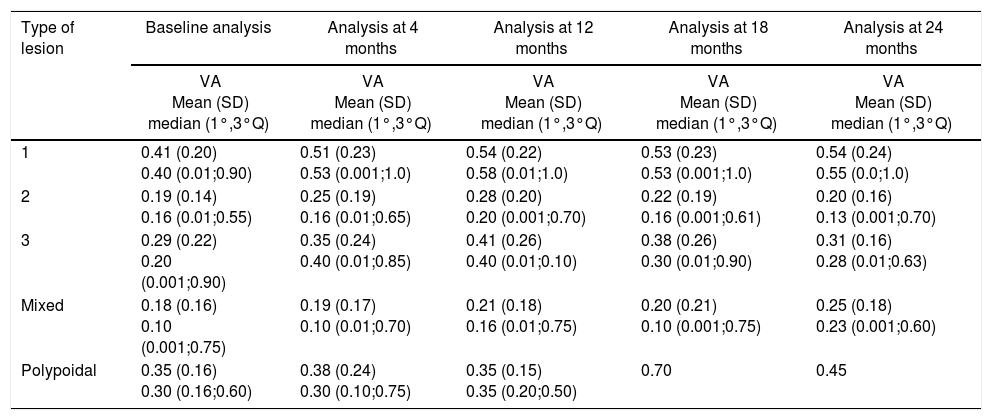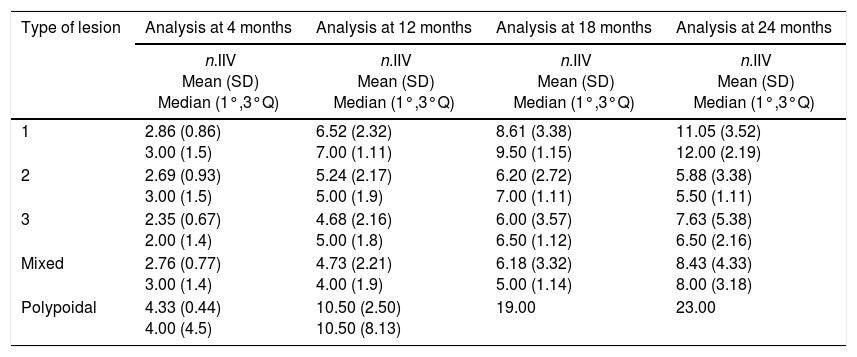To analyse the incidence and outcomes of the different neovascular subtypes in age-related macular degeneration (AMD).
Material and methodsA retrospective review was carried out on patients with neovascular AMD treated in the University and Polytechnic Hospital la Fe in Valencia by the same retinal physician (RGP) between December 2012 and July 2015. The anatomic classification of the neovascular lesions was recorded, as well as the number of intravitreal treatments administered and the change in visual acuity (VA) obtained throughout the follow-up.
ResultsA total number of 174 eyes of 156 patients (mean age: 79.9years) with a minimum follow-up of 4 months were included. The anatomic classification of choroidal neovascularisation (CNV) showed the presence of type1 lesions in 40,8%, type2 lesions in 12%, type3 lesions in 31%, and mixed lesions in 14.4%, with 1.7% showing polypoidal choroidal vasculopathy features. Overall, the mean baseline VA was 0.32, improving to 0.38 at 24months, after having received a mean of 9.3 injections. Type 2, 3, and mixed forms showed a visual result significantly lower than type1, but there was no significant difference in the polypoidal vasculopathy.
ConclusionsType 1 CNV was the most common finding, and was associated with a better visual prognosis, compared to the other neovascular lesions.
Analizar la incidencia y los resultados visuales de cada uno de los subtipos de lesión neovascular en pacientes con degeneración macular asociada la edad (DMAE).
Material y métodosRevisión retrospectiva de pacientes con DMAE neovascular tratados en el Hospital Universitario y Politécnico la Fe de Valencia por un mismo retinólogo (RGP) desde diciembre de 2012 hasta julio del 2015. Se registraron las formas anatómicas del complejo neovascular, así como el número de tratamientos intravítreos administrados y el cambio de visión obtenido con este.
ResultadosFueron incluidos 174 ojos de 156 pacientes con una edad media de 79,9 años y un seguimiento de al menos 4meses. El 40,8% presentaban neovascularización coroidea (NVC) tipo1; el 12%, tipo2; el 31%, tipo3; el 14,4% presentaban formas mixtas y el 1,7%, vasculopatía polipoidea. La agudeza visual inicial media era de 0,32 y de 0,38 a los 24meses, habiendo recibido una media de 9,3 inyecciones. Las formas neovasculares tipo 2, 3 y mixtas mostraron un resultado visual significativamente inferior a las tipo1, no existiendo significación estadística en la vasculopatía polipoidea.
ConclusionesLa NVC tipo1 fue la más observada, y además se relacionó con un mejor pronóstico visual, en comparación con el resto de lesiones neovasculares, en pacientes tratados con ranibizumab.








